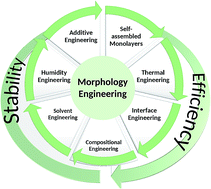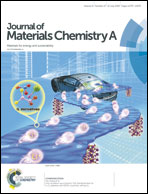A review on morphology engineering for highly efficient and stable hybrid perovskite solar cells
Abstract
Hybrid organic–inorganic halide perovskites have been extensively studied due to their remarkable optical and electronic features, such as high absorption coefficient, long exciton diffusion length, excellent carrier transport and low exciton binding energy, as well as a facile solution process for the fabrication of organic–inorganic halide perovskites. High-efficiency solar cells with methylammonium lead halide perovskites have been successfully achieved within just a few years. The high-quality perovskite films have made a significant impact on the fabrication of efficient and stable hybrid perovskite solar cells. Morphology engineering has been recognized as an effective way to obtain highly crystalline and pinhole-free perovskite films with optimized grain sizes. Here, we summarize several methodologies of morphology engineering, consisting of additive engineering, self-assembled monolayers (SAMs), solvent engineering, solvent annealing, thermal engineering, compositional engineering and humidity engineering. The highly crystallized perovskite layers prepared by using these techniques show a uniform surface morphology, resulting in enhanced photovoltaic efficiency and long-term stability of hybrid perovskite solar cells.

- This article is part of the themed collections: Recent Review Articles, International Year of the Periodic Table : From Pb and Sn Perovskites to the Next Generation and 2018 Journal of Materials Chemistry A HOT Papers


 Please wait while we load your content...
Please wait while we load your content...